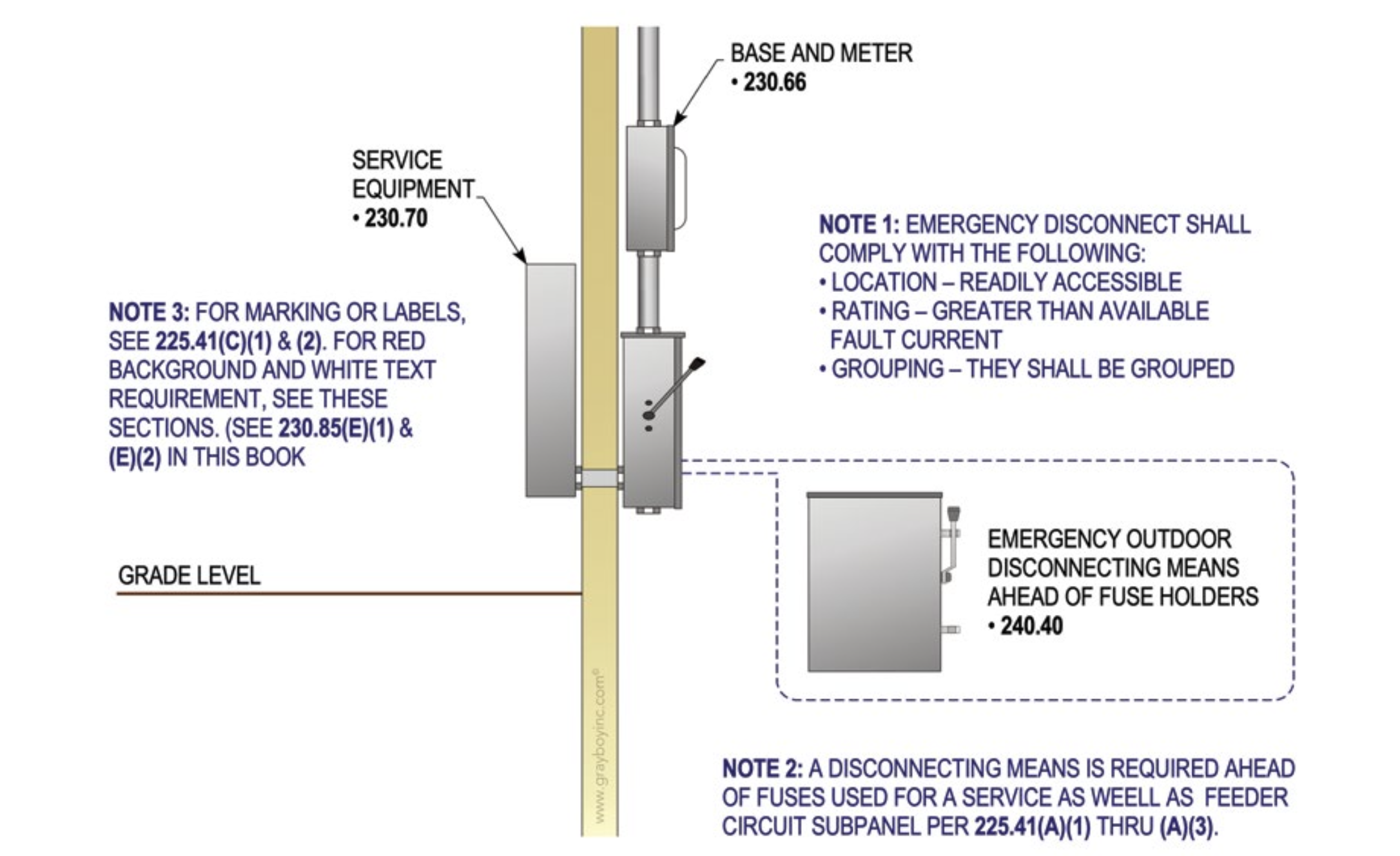225.41(A)(B)(C) Emergency Disconnects – 1 and 2 Family Homes
Change Summary
-
The Code Making Panel (CMP) has accepted and added requirements for designing and installing outdoor emergency disconnects.
| NEC®Text |
|---|
|
Article 225 Outside Branch Circuits and Feeders Material taken from the National Electric Code. is reprinted with permission from NFPA 70., 2023 edition. National Electrical Code®, Copyright 2022, National Fire Protection Association, Quincy, MA. All rights reserved. |
Expert Analysis
A new section has been added to correlate with existing requirements for service supplied dwelling units and the revisions in 230.85. The new section will help first responders and provide the ability to disconnect the power to the dwelling without regard to whether it's a feeder or service supplied.








